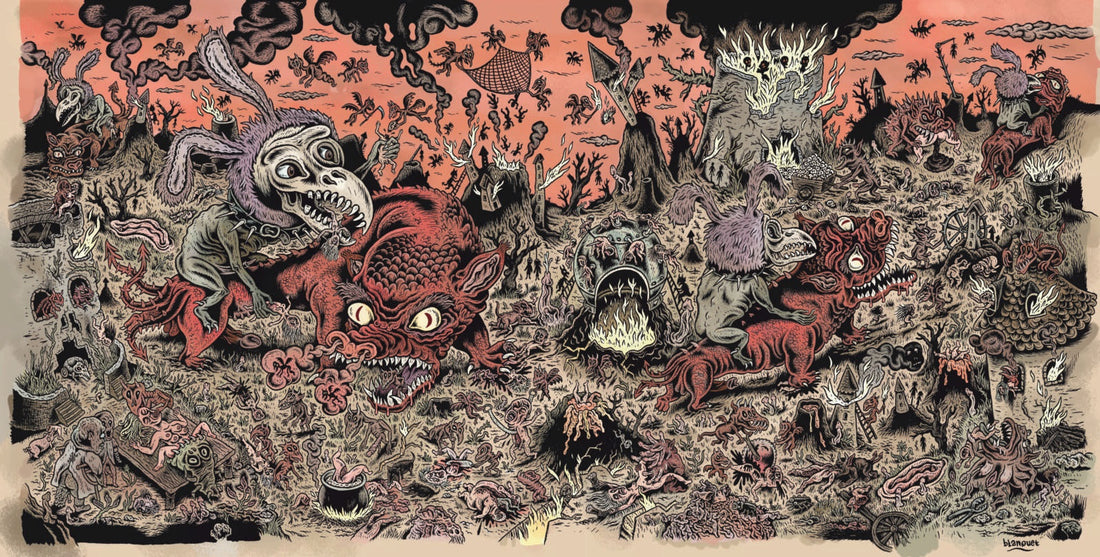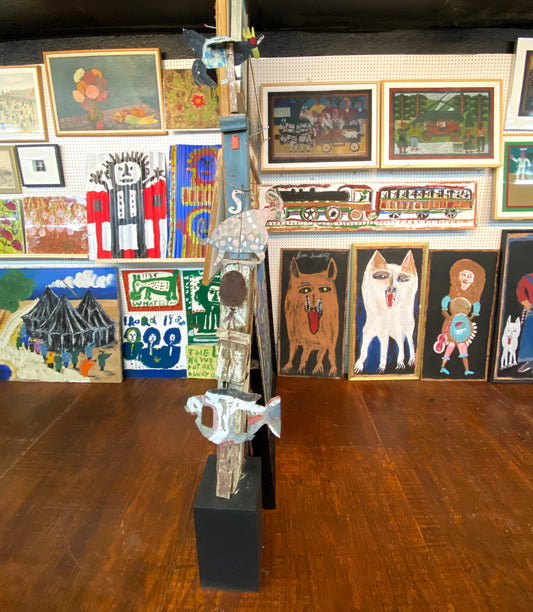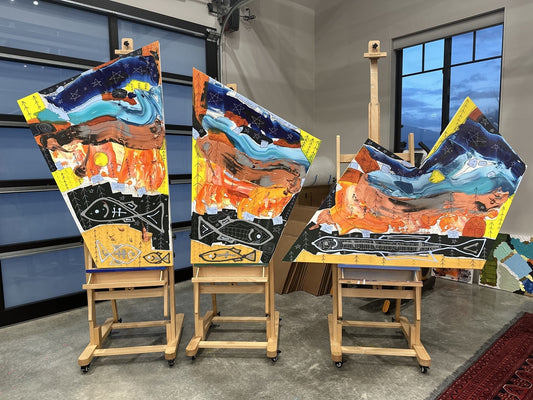First published: Spring 2024
In a new book, Alla Chernetska surveys the work of Stéphane Blanquet, one of France’s most celebrated self-taught graphic artists. Here Raw Vision publishes an edited extract
Stéphane Blanquet's passion for drawing was born from the comics then from the graphic novels that he discovered at the renowned bookshop Regard Moderne in Paris. These publications, which were often produced in black and white for financial reasons, inspired him with their radicality and power.

Untitled, 1994, acrylic on paper, 9.5 x 14 in. / 24 x 36 cm; cover of Dirty Plotte magazine, no 9, 1994
Diagnosed with a muscular degenerative condition at the age of eleven, Blanquet found himself having to adapt to physical constraints. Comics appeared to be the most suitable tool for his creative beginnings. He chose to produce them in a small format using pen and paper, aware of the challenges he would face working at a larger size. Learning about lines and composition, and exploring graphic elements, he began to express his own ideas and desires, tell his stories, and invent a universe that quickly become identifiable. Even today, the artist demonstrates his preference for “poor means”: just ink and paper.

Untitled, 1993, Indian ink / acrylic on paper, 9.5 x 6.5 in. / 24 x 17 cm; cover and inside page of Cavewoman magazine, 1993
The progression of his illness gradually forced Blanquet to find new ways to express himself. The use of the pen became increasingly difficult for him because of the manual pressure required. At the same time, his desire to experiment also led him to explore other techniques, including working with brushes, feathers, pencils, and even photographs. His tests with acrylic paints, carried out in 1992, disappointed him because they gave a flat, expressionless appearance to his drawings and so he continued to work mainly in black and white. He did not experiment again with colour for a while but, by the 2000s, his works abounded with characters of curvilinear shapes and bright hues.

Le Satyre (The Satyr), 2008, oil on paper, 21.5 x 12.5 in. / 54 x 32 cm
Blanquet varies his approach from one technique to another. With his pen drawings, he does not have an overall vision before he starts and does not create preliminary sketches. He begins the drawing in one corner and then continues over the entire picture space, adding different elements and details. Consequently, his drawings are guided solely by his intuition. In his paintings a sketch may serve as the basis – however, the artist voluntarily allows accidents to seep in.
This is an article extract; read the full article in Raw Vision #118.




